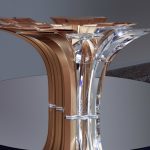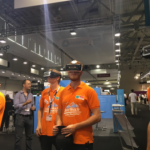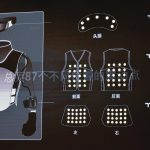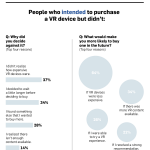soar motion’s Hand-tracking know-how gives 3-d input For three-D virtual Worlds
the delicate motion-keep watch over system shall be built into an optional faceplate for OSVR’s open-supply VR platform.
March 25, 2015
In 2013, I reviewed jump movement’s controller—a steak-fry-sized $80 USB gizmo that mean you can keep an eye on pc games, reading and creativity apps, and different tool by waving your hands as when you have been Tom Cruise in Minority document. It was neat. but it surely was additionally glaring that the expertise would fail or flourish based on whether or not 1/3-birthday party developers came up with uses for it that had large appeal.
considering that I wrote about bounce, its means to register even very subtle actions of your fingers and fingers has gotten even more refined. but the most promising development for its tech has been the parallel arrival of digital-fact systems similar to Oculus Rift and OSVR. once you’ve gotten strapped a VR headset to your head, you are going to desire a solution to manipulate objects within the digital world you enter. bounce is as much as the job. And the conception of the usage of it for 3-D enter within three-D worlds has extra long-time period attainable than simply using it as an air mouse for laptop-based apps.
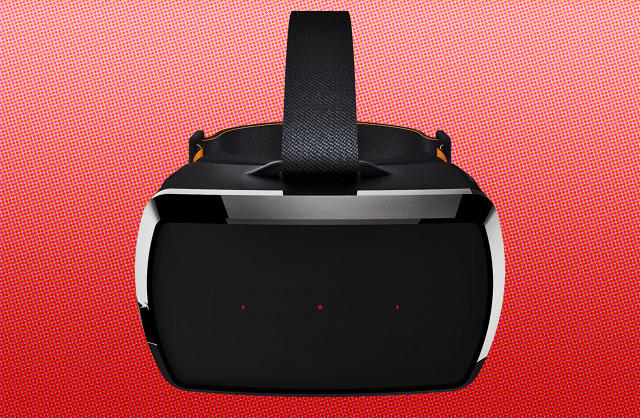
remaining 12 months, jump devised a $20 mount that can help you fasten its controller to the entrance of Oculus’s Rift headset, and started showing off software that helps developers implement hand-tracking in VR apps. Now it can be saying that its tech will be constructed into an optional faceplate for the OSVR Hacker Dev package, which is scheduled to start transport in June. the same sensors in its USB controller shall be embedded within the faceplate, taking into consideration movement control just like what bounce is also doing with Oculus, excluding without the stand-by myself controller, mount, and extra cable.
OSVR, which is spearheaded with the aid of gaming pc firm Razer, among others, is an open-source platform that goals to turn out to be an Android-like pressure for VR, a foundational know-how that many companies can use to build merchandise. If it catches on, bounce’s expertise may be integrated into all kinds of VR hardware from all forms of manufacturers.
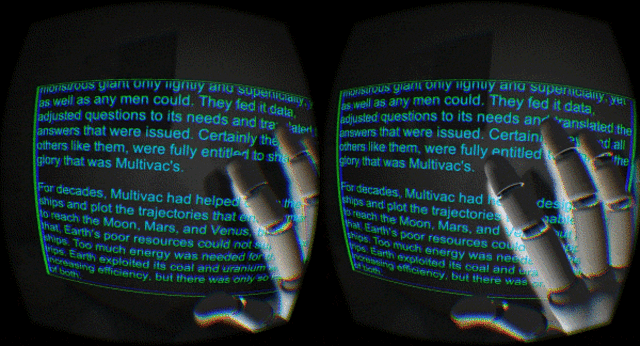
all through a latest talk over with to soar movement’s San Francisco place of job, I chatted with the corporate’s founders, David Holz and Michael Buckwald, and tried out some digital-fact demos using both an OSVR headset and Oculus Rift. I nudged spheres and cubes around with my fingers; controlled a torrent of stars à la Mickey Mouse in The Sorcerer’s Apprentice; and manipulated controls equivalent to pushbuttons and sliders. They have been simply examples of things bounce will help developers accomplish, not full-blown VR applications, and the expertise wasn’t relatively eerie in its realism. (occasionally my fingertip would poke inside of a cube, and that i needed to get used to the fact that i could not feel the objects I touched.) however it certain felt more natural than the usage of a conventional sport controller whereas sporting a VR headset.
the combo of a headset and jump’s expertise is paying homage to what Microsoft is doing with HoloLens, its augmented-truth headset. then again, i have never viewed any evidence that Microsoft’s version will enable for the type of sophisticated manipulation that leap gives. in one HoloLens demo, you employ an “air faucet”—a jab of your finger—to smack a virtual hammer within a global in line with Minecraft. With leap, it’s essential theoretically choose up such a hammer and use it to pound away in a much more actual-world manner. seems like fun to me, and reason enough to be enthusiastic about soar’s possible in every single place again.
(173)


